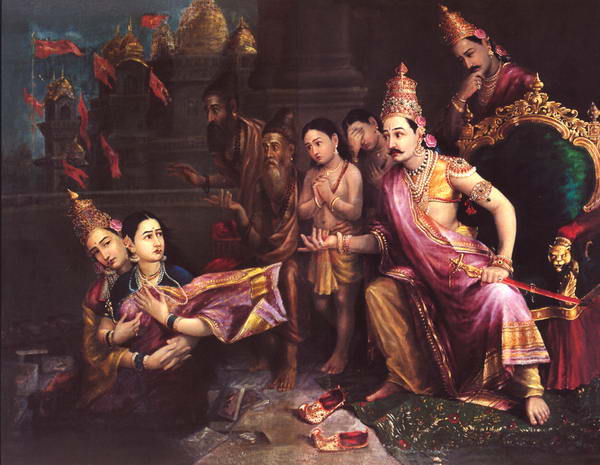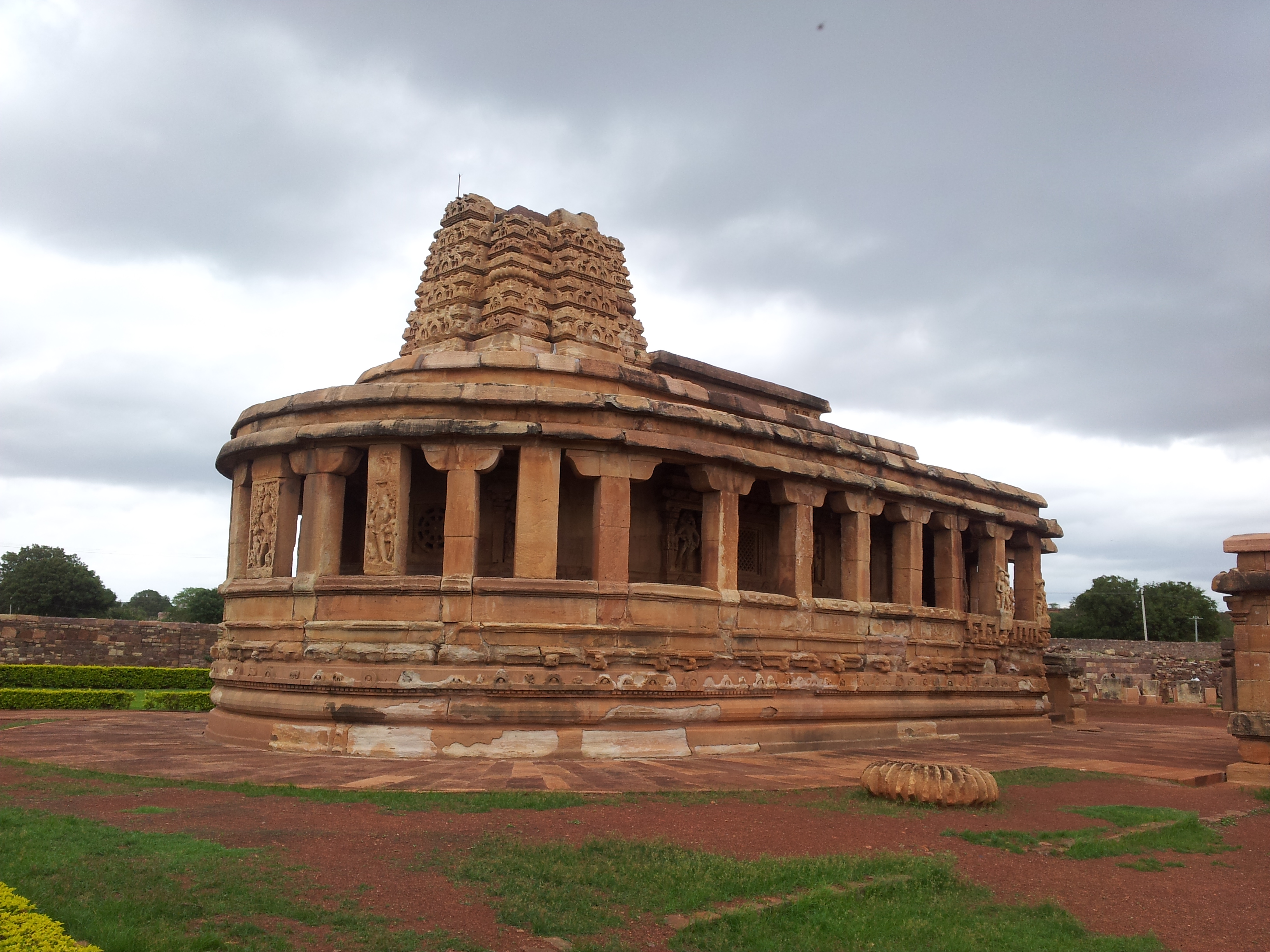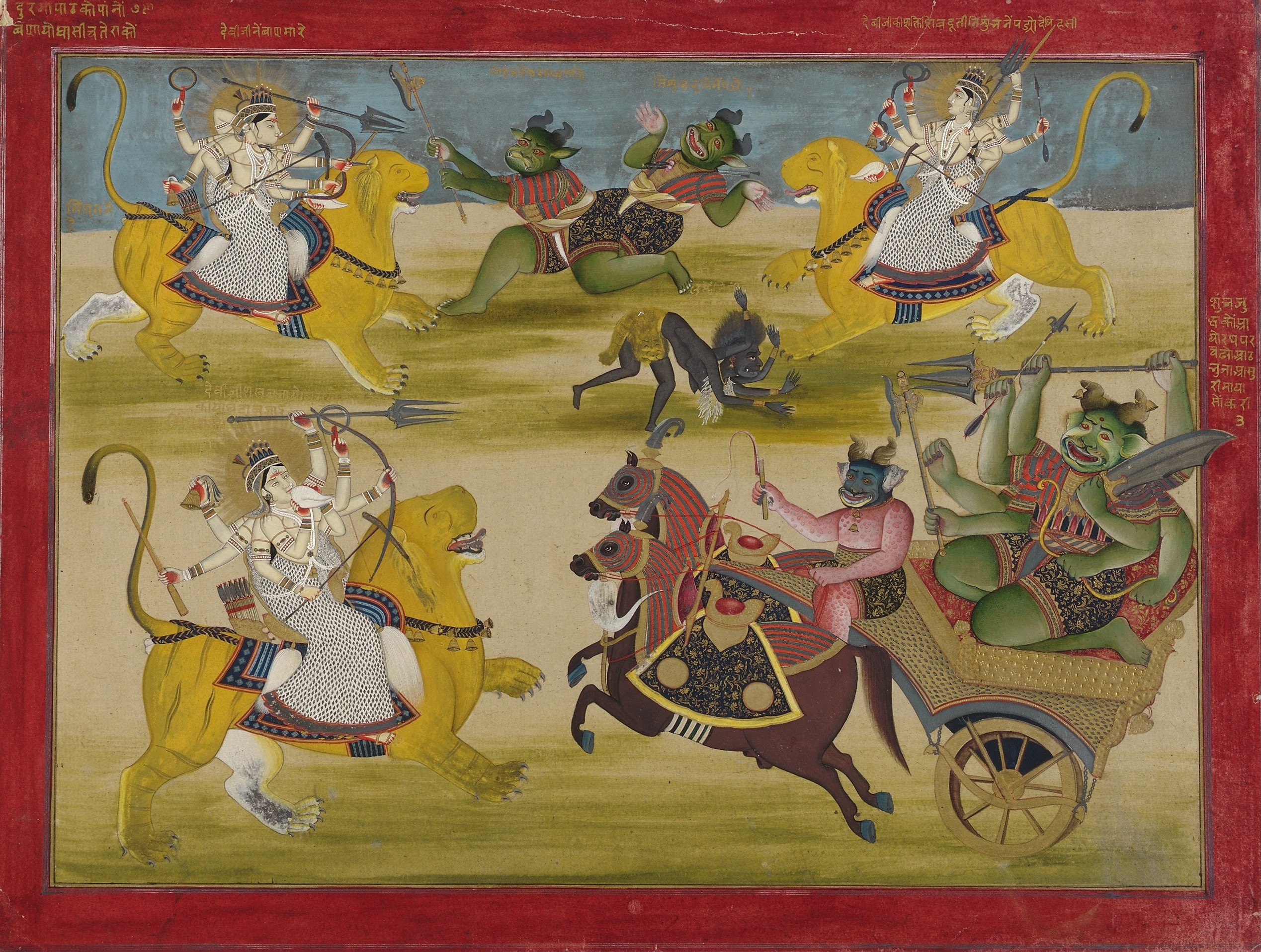|
Varahi
Varahi (, IAST:) is one of the Matrikas, a group of seven mother goddesses in the Hindu religion who bears the head of a sow. In Nepal, she is called Barahi. In Rajasthan and Gujarat, she is venerated as Dandini. Varahi is more commonly venerated in the sect of the Goddess-oriented Shaktism, but also in Shaivism (devotees of Shiva) and Vaishnavism (devotees of Vishnu). She is usually worshipped at night, using secretive Vamamarga Tantric practices. Her forms can be seen in Buddhism as well, like the Buddhist goddesses Vajravārāhī and Marichi. Legend According to the Shumbha-Nishumbha story of the ''Devi Mahatmya'' from the '' Markandeya Purana'' religious texts, the Matrikas goddesses appears as ''shakti''s (feminine powers) from the bodies of the gods. The scriptures say Varahi was created from Varaha. She has a boar form, wields a chakra (discus) and fights with a sword. After the battle described in the scripture, the Matrikas dancedrunk on the demons' bloo ... [...More Info...] [...Related Items...] OR: [Wikipedia] [Google] [Baidu] |
Matrikas
Matrikas (Sanskrit: मातृका (singular), IAST: mātṛkā, lit. "mothers") also called Mataras or Matri, are a group of mother goddesses in Hinduism. The Matrikas are often depicted in a group of seven, the Saptamatrika(s) (Seven Mothers). However, they are also depicted as a group of eight, the Ashtamatrika(s). In the '' Brihat Samhita'', Varahamihira says that "Matrikas are forms of Parvati taken by her with cognizance of (different major Hindu) gods corresponding to their names." They are associated with these gods as their energies (''Shaktis''). Brahmani emerged from Brahma, Vaishnavi from Vishnu, Maheshvari from Shiva, Indrani from Indra, Kaumari from Kartikeya, Varahi from Varaha and Chamunda from Chandi. And additionals are Narasimhi from Narasimha and Vinayaki from Ganesha. Originally the seven goddesses of the seven stars of the star cluster of the Pleiades, they became quite popular by the seventh century CE and a standard feature of the Hindu goddes ... [...More Info...] [...Related Items...] OR: [Wikipedia] [Google] [Baidu] |
Shaktism
Shaktism () is a major Hindu denomination in which the God in Hinduism, deity or metaphysics, metaphysical reality is considered metaphorically to be a woman. Shaktism involves a galaxy of goddesses, all regarded as different aspects, manifestations, or personifications of the divine feminine energy called ''Shakti''. It includes various modes of worship, ranging from those focused on the most worshipped Durga, to gracious Parvati, and the fierce Kali. After the decline of Buddhism in India, various Hindu and Buddhist goddesses were combined to form the Mahavidya, a Pantheon (religion), pantheon of ten goddesses. The most common forms of the Mahadevi worshipped in Shaktism include: Durga, Kali, Saraswati, Lakshmi, Parvati, and Tripura Sundari. Also worshipped are the various Gramadevatas across the Indian villages. Shaktism also encompasses various Tantra#Śaiva and Śākta tantra, tantric sub-traditions, including Vidyapitha and Kulamārga. Shaktism emphasizes that intense ... [...More Info...] [...Related Items...] OR: [Wikipedia] [Google] [Baidu] |
Varaha
Varaha (, , "boar") is the avatar of the Hinduism, Hindu god Vishnu, in the form of a wild boar, boar. Varaha is generally listed as third in the Dashavatara, the ten principal avatars of Vishnu. In legend, when the demon Hiranyaksha steals the earth goddess Bhumi (goddess), Bhumi and hid her in the primordial waters, Vishnu appears as Varaha to rescue her. Varaha kills Hiranyaksha and retrieves the earth from the cosmic ocean, lifting her on his tusks, and restores her to her place in the universe. Varaha is depicted as a boar or in an anthropomorphic form, with a boar's head and the human body. Varaha often depicted lifing his consort Bhumi, the earth. Etymology and other names The deity Varaha derives its name from the Sanskrit word ''varaha'' (Devanagari: वराह, ) meaning "boar" or "wild boar". The word ''varāha'' is from Proto-Indo-Iranian language, Proto-Indo-Iranian term ''warāȷ́ʰá'', meaning boar. It is thus related to Avestan ''varāza'', Kurdish lan ... [...More Info...] [...Related Items...] OR: [Wikipedia] [Google] [Baidu] |
Lakshmi
Lakshmi (; , , sometimes spelled Laxmi, ), also known as Shri (, , ), is one of the principal goddesses in Hinduism, revered as the goddess of wealth, fortune, prosperity, beauty, fertility, sovereignty, and abundance. She along with Parvati and Sarasvati, form the trinity of goddesses called the Tridevi. Lakshmi has been a central figure in Hindu tradition since pre-Buddhist times (1500 to 500 BCE) and remains one of the most widely worshipped goddesses in the Hindu pantheon. Although she does not appear in the earliest Vedic literature, the personification of the term '' shri''—auspiciousness, glory, and high rank, often associated with kingship—eventually led to the development of Sri-Lakshmi as a goddess in later Vedic texts, particularly the ''Shri Suktam''. Her importance grew significantly during the late epic period (around 400 CE), when she became particularly associated with the preserver god Vishnu as his consort. In this role, Lakshmi is seen as the ide ... [...More Info...] [...Related Items...] OR: [Wikipedia] [Google] [Baidu] |
Bhūmi
Bhumi (Sanskrit: भूमि, romanized: Bhūmi), also known as Bhudevi, Dharani, and Vasundhara, is a significant goddess in Hinduism, personifying the Earth. Her earliest form is reflected in the Vedic goddess Prithvi, though their roles and depictions are drastically different. Bhumi features prominently in the ''Mahabharata'' and various Puranas. According to Vaishnava tradition, she is the second consort of Vishnu, along with Sridevi and Niladevi. As per Hindu mythology, Varaha, the third avatar of Vishnu, saved her from the asura Hiranyaksha and later married her, making her one of his consorts. After this rescue, Varaha and Bhumi have a son named Mangala. Bhumi also bears Narakasura, an asura, due to Hiranyaksha's influence. In the epic ''Ramayana'', she is mentioned as the mother of Sita, the epic's female protagonist. Bhumi is described to be born as Satyabhama, the consort of Krishna, to assist in slaying Narakasura. The Alvar saint Andal is also considered an av ... [...More Info...] [...Related Items...] OR: [Wikipedia] [Google] [Baidu] |
Devi
''Devī'' (; ) is the Sanskrit word for 'goddess'; the masculine form is Deva (Hinduism), ''deva''. ''Devi'' and ''deva'' mean 'heavenly, divine, anything of excellence', and are also gender-specific terms for a deity in Hinduism. The concept and reverence for goddesses appears in the Vedas, which were composed around the 2nd millennium BCE. However, they did not play a vital role in that era. Goddesses such as Durga, Kali, Lakshmi, Parvati, Radha, Saraswati and Sita have continued to be revered in the modern era. The medieval era Puranas witness a major expansion in mythology and literature associated with Devi, with texts such as the ''Devi Mahatmya'', wherein she manifests as the ultimate truth and supreme power. She has inspired the Shaktism tradition of Hinduism. Further, Devi is viewed as central in the Hindu traditions of Shaktism and Shaivism. Etymology ''Devi'' and ''deva'' are Sanskrit terms found in Vedic literature around the 3rd millennium BCE. ''Deva'' is masculi ... [...More Info...] [...Related Items...] OR: [Wikipedia] [Google] [Baidu] |
Devi Mahatmya
The ''Devi Mahatmya'' or ''Devi Mahatmyam'' () is a Hindu philosophical text describing the Goddess, known as Mahadevi, Adi Parashakti or Durga, as the supreme divine parabrahma, ultimate reality and creator of the universe. It is part of the Markandeya Purana, Mārkandeya Purāna (chapters 81 to 93). ''Devi Mahatmyam'' is also known as the ''Durgā Saptashatī'' () or Śata Chandī (शत् चंडी) and ''Chandi Path'' (). The text contains 700 verses arranged into 13 chapters. It is one of the most important texts in Shaktism, along with ''Devi-Bhagavata Purana'' and Devi Upanishad. The text is one of the earliest extant complete manuscripts from the Hindu traditions which describes reverence and worship of the feminine aspect of God. The ''Devi Mahatmyam'' describes a storied battle between good and evil, where the Devi manifesting as goddess Durga leads the forces of good against the demon Mahishasura—the goddess is very angry and ruthless, and the forces of goo ... [...More Info...] [...Related Items...] OR: [Wikipedia] [Google] [Baidu] |
Nepal
Nepal, officially the Federal Democratic Republic of Nepal, is a landlocked country in South Asia. It is mainly situated in the Himalayas, but also includes parts of the Indo-Gangetic Plain. It borders the Tibet Autonomous Region of China China–Nepal border, to the north, and India India–Nepal border, to the south, east, and west, while it is narrowly separated from Bangladesh by the Siliguri Corridor, and from Bhutan by the States and union territories of India, Indian state of Sikkim. Nepal has a Geography of Nepal, diverse geography, including Terai, fertile plains, subalpine forested hills, and eight of the world's ten List of highest mountains#List, tallest mountains, including Mount Everest, the highest point on Earth. Kathmandu is the nation's capital and List of cities in Nepal, its largest city. Nepal is a multi-ethnic, multi-lingual, multi-religious, and multi-cultural state, with Nepali language, Nepali as the official language. The name "Nepal" is first record ... [...More Info...] [...Related Items...] OR: [Wikipedia] [Google] [Baidu] |
Marici (Buddhism)
Mārīcī (; ; Japanese: ) is a Buddhist deity (deva), as well as a bodhisattva associated with light and the Sun. By most historical accounts Mārīcī is considered a goddess, but in some regions she is depicted as a male god revered among the warrior class in East Asia. Mārīcī is typically depicted with multiple arms, riding a charging boar or sow, or on a fiery chariot pulled by seven horses or seven boars. She has either one head or between three and six, with one shaped like a boar. In parts of East Asia, in her fiercest forms, she may wear a necklace of skulls. In some representations, she sits upon a lotus. Some of the earliest iconographies of Marici are found in India and Tibet, particularly near the ancient port city and Buddhist site Salihundam of Andhra Pradesh, where Māricī is depicted as riding on a chariot pulled by seven horses in a manner similar to Surya (sun deity with goddesses Usha and Chaya). In Mahayana Buddhist texts, Marici is the goddess of ... [...More Info...] [...Related Items...] OR: [Wikipedia] [Google] [Baidu] |
Sumbha And Nisumbha
Shumbha (शुम्भ) and Nishumbha (निशुम्भ) are two asuras in Hindu mythology, featured in the ''Devi Mahatmya''. In their legend, they were slain by the goddess Kaushiki. Legend The story of Shumbha and Nishumbha begins in the fifth chapter of the ''Devi Mahatmya''. Durga retells how two asura brothers sought to conquer the three worlds by subjecting themselves to severe penance and purification rituals so that no man or asura could destroy them. Shumbha and Nishumbha traveled to Pushkara, a sacred site, and remained there in prayer for ten thousand years. The creator deity Brahma saw the brothers' penance, and was pleased, granting them the boon they requested. Chanda and Munda, two lesser asuras in the service of Shumbha, encountered the goddess Durga, and were overwhelmed by her beauty. They carried reports of this goddess to Shumbha, who sought to possess Durga. Shumbha sent the asura Sugriva to court Parvati, but she rejected his advances. It was the ... [...More Info...] [...Related Items...] OR: [Wikipedia] [Google] [Baidu] |
Chakra
A chakra (; ; ) is one of the various focal points used in a variety of ancient meditation practices, collectively denominated as Tantra, part of the inner traditions of Hinduism and Buddhism. The concept of the chakra arose in Hinduism. Beliefs differ between the Indian religions: Buddhist texts mention four or five chakras, while Hindu sources often have six or seven. The modern "Western chakra system" arose from multiple sources, starting in the 1880s with H. P. Blavatsky and other Theosophists, followed by Sir John Woodroffe's 1919 book ''The Serpent Power'', and Charles W. Leadbeater's 1927 book ''The Chakras''. Psychological and other attributes, rainbow colours, and a wide range of correspondences with other systems such as alchemy, astrology, gemstones, homeopathy, Kabbalah and Tarot were added later. Etymology Lexically, ''chakra'' is the Indic reflex of an ancestral Indo-European languages, Indo-European form ''*kʷékʷlos'', whence also "wheel" and "cycl ... [...More Info...] [...Related Items...] OR: [Wikipedia] [Google] [Baidu] |









